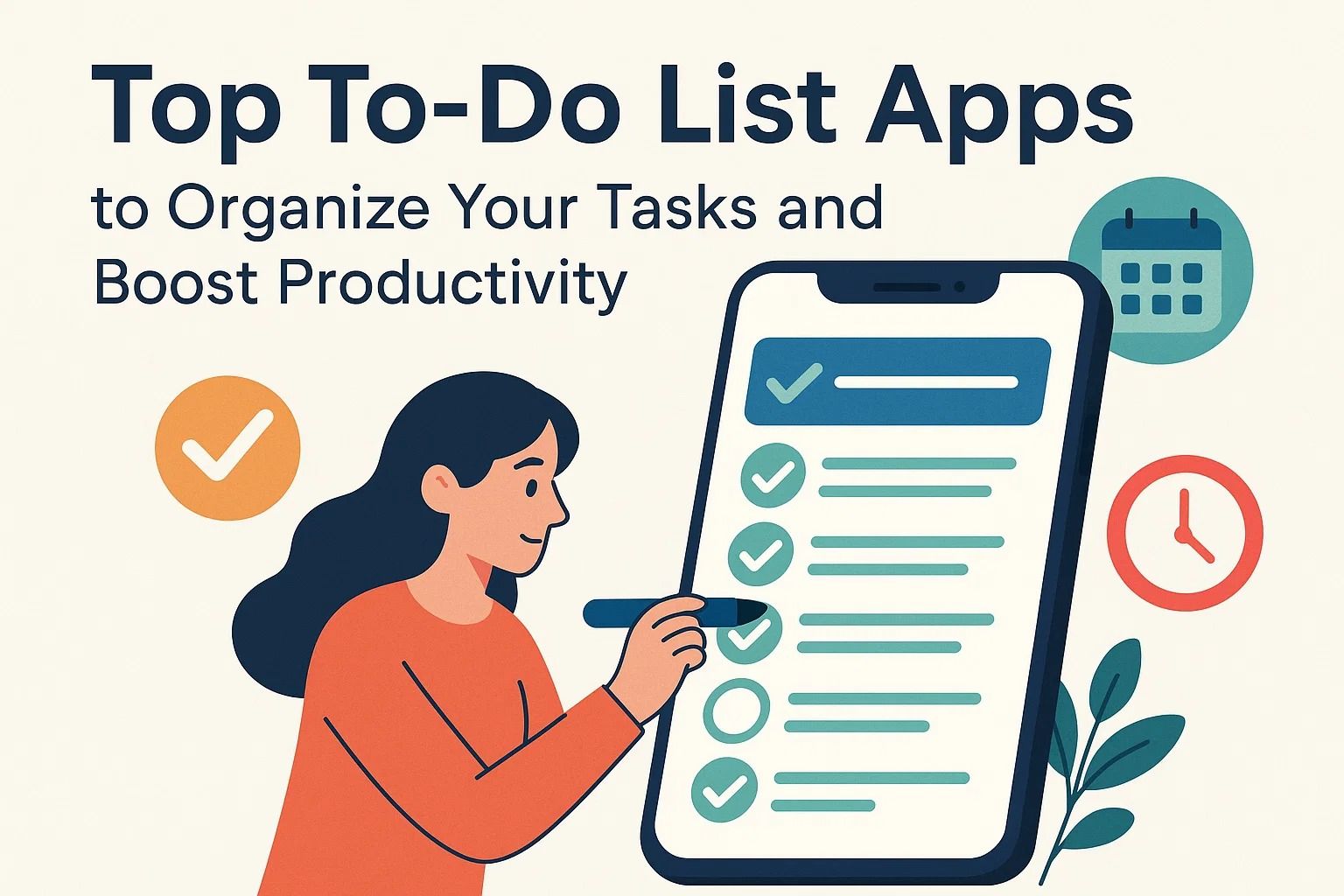
Top To-Do List Apps to Organize Your Tasks and Boost Productivity
Why To-Do List Apps Are Essential in 2025
In an age full of distractions, effectively organizing one's tasks proves to be one of the primary productivity obstacles. To-do list applications aren’t merely electronic notepads anymore, but are now robust productivity centers that support reminders, calendars, team collaboration, and even AI-assisted recommendations. Picking the right app can differentiate between being overloaded or organized.
Benefits of To-Do List Applications
- Organization – categorize tasks by importance, deadlines, or other criteria.
- Productivity – assess performance and create realizable targets.
- Collaboration – share task lists among teams or family.
- Integration – connect with calendars, emails, and other project management applications.
Current applications are more than just checklists. For instance, some link directly with cloud hosting services, whereas others revolve around personal time scheduling. Such versatility makes them ideal for freelancers as well as corporates. If you're already familiar with our guide on efficiently managing your email, you'll realize that task organization applications are the best companions for an inbox-zero approach.
Top To-Do List Apps to Consider in 2025
With so many productivity apps on the market, the best to-do list app for you will depend on your workflow, budget, and style. Here is a selection of the most trusted and popular to-do list apps that can help individuals and teams stay organized in 2025.
Todoist
Renowned for its beautiful UI and multi-platform support, Todoist enables productivity for managing projects, setting monthly deadlines, and prioritizing with labels and filters. Ideal for those who appreciate a sleek design combined with powerful features.
Microsoft To Do
A free and simple solution tightly integrated with Microsoft 365. Ideal for those who rely heavily on Outlook or Teams, making it easy to manage tasks across devices.
Notion
Notion is more than just a task management tool; it's a complete workspace that allows you to manage tasks, notes, databases, and wikis all in one place. Ideal for freelancers and startups juggling multiple projects.
TickTick
TickTick combines smart scheduling, habit tracking, and calendar integrations in one app. Its balance of features and price makes it a favorite among productivity enthusiasts.
Every application has its pros and cons: Todoist is simple yet powerful, Microsoft To Do suits corporate settings, Notion excels in flexible knowledge management, and TickTick appeals to users wanting additional features like habit tracking. For remote teams, such tools are just as important as a way of balancing multiple freelance projects.
How to Choose the Best To-Do List App
Because there are so many choices, the goal is not to determine which app is the "best" overall, but to find an app that works for your workflow. A college student may prefer a straightforward experience, while a founder of a startup may require additional collaboration tools. Some other pointers to consider as you choose:
- Know what you need – do you need collaboration features, calendar sync, or just a list for your personal life?
- Try out free versions – most apps offer some sort of free tier, which allows you to take it for a test drive before investing.
- Prioritize integration – the best option is one that can easily add or sync with your email, calendar, or project management tool.
- Low complexity is best – the best productivity system is one that you'll actually use, and make it a habit.
To-do apps are there to lessen your load, not add to it, so they should be utilized to save you time and mental cycles. Use them alongside other productivity techniques, such as time blocking or inbox zero. If you missed it, our article on managing email efficiently features ways to keep your inbox as seamless as your task list.

















